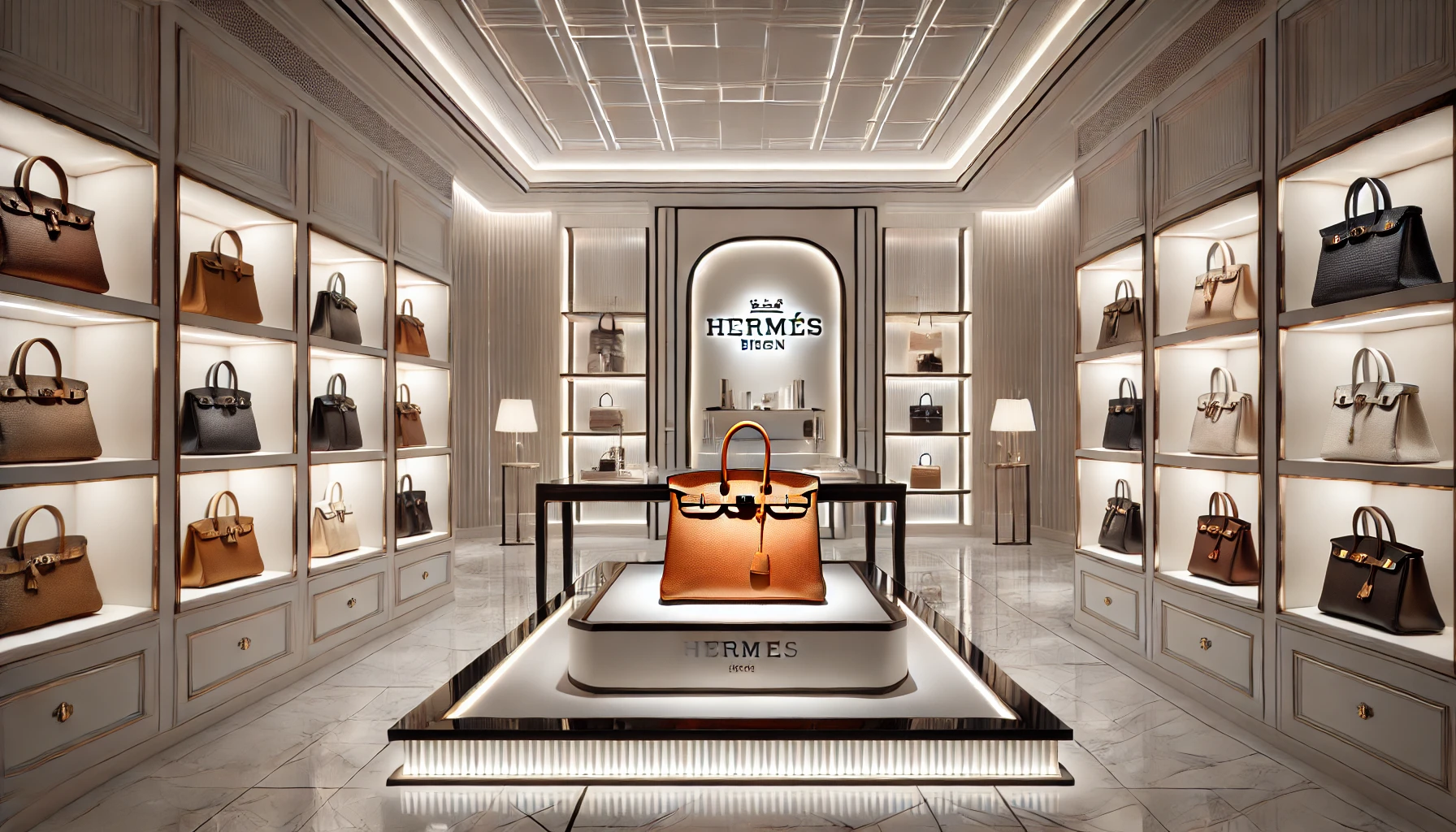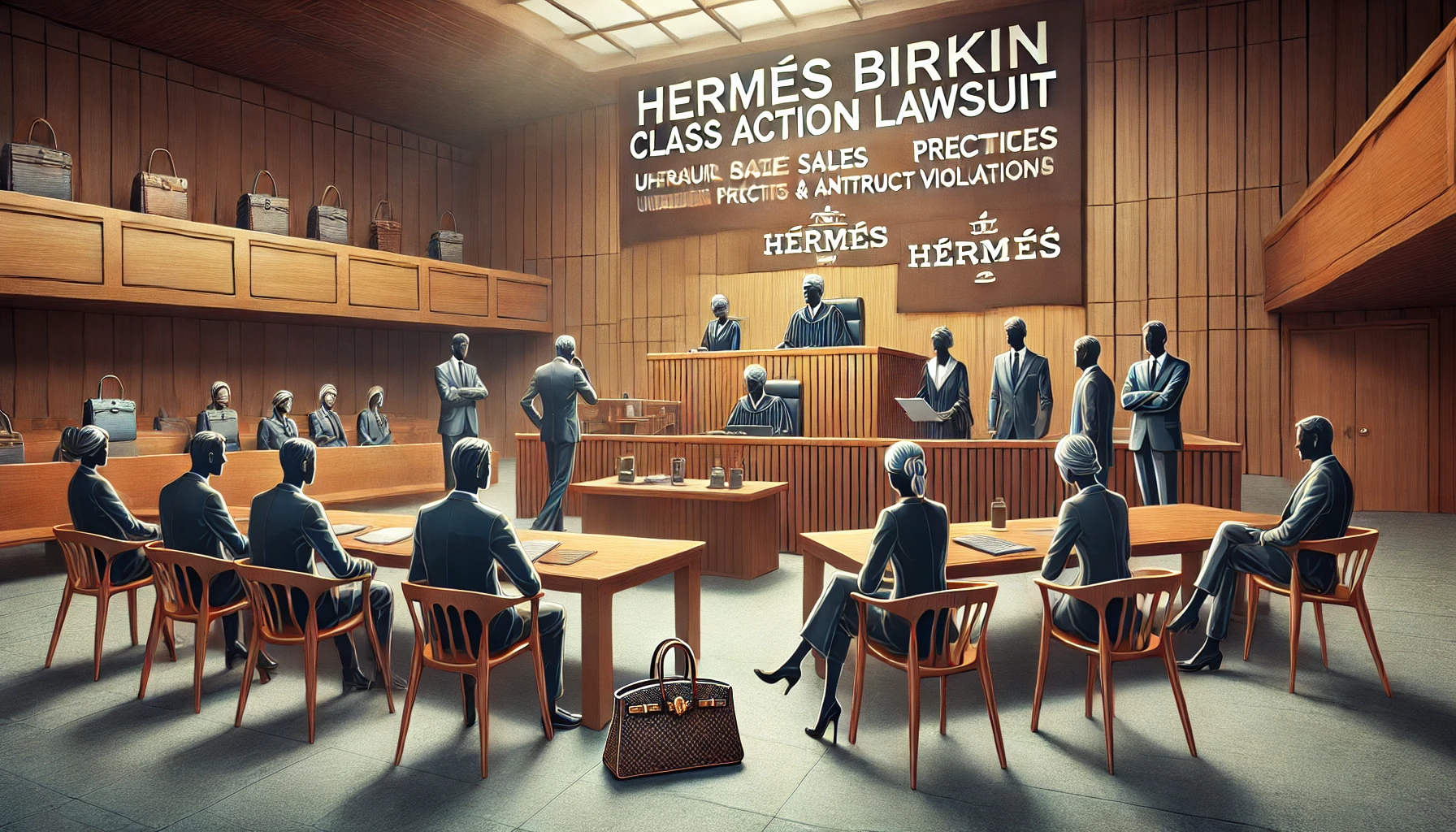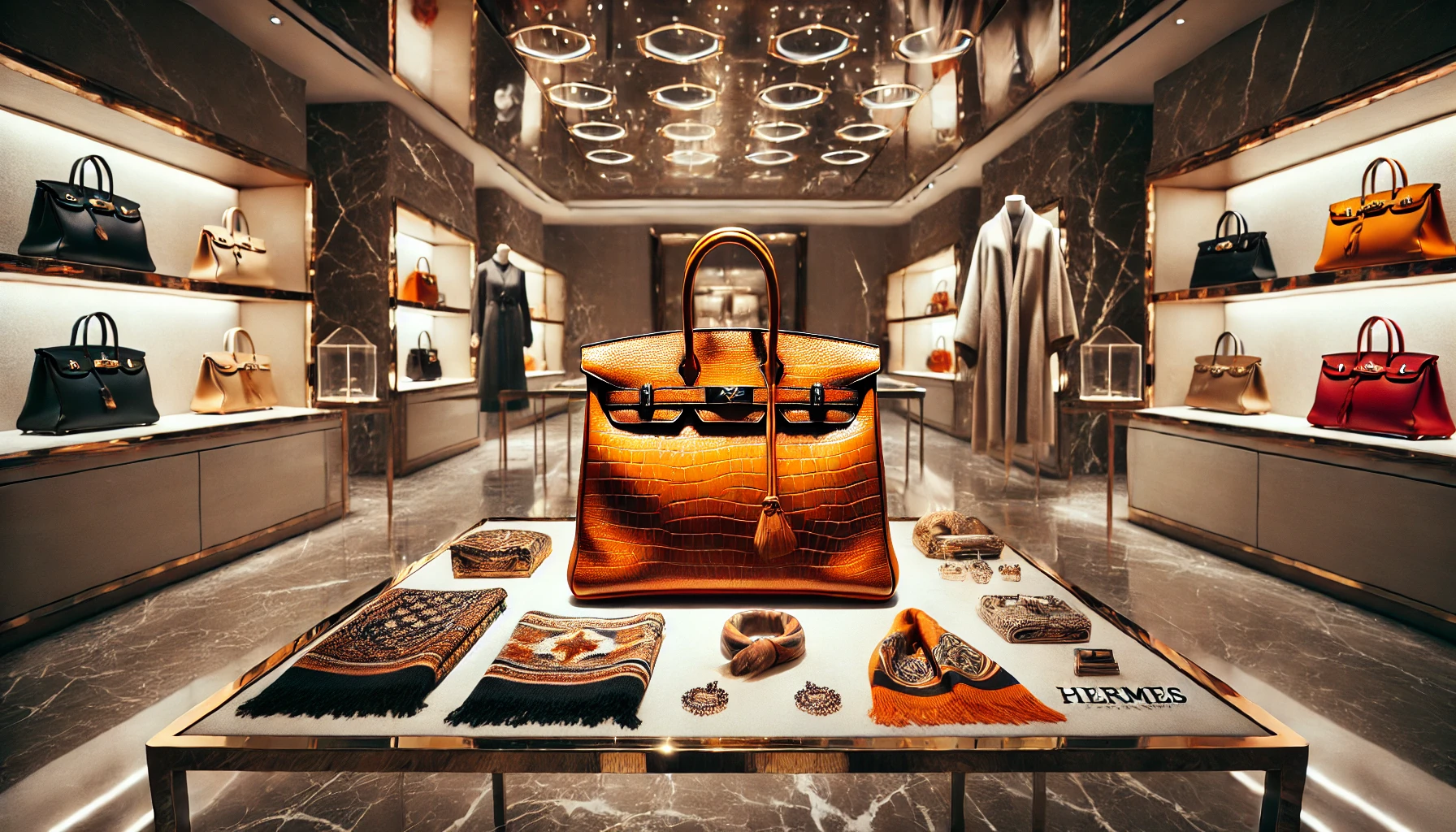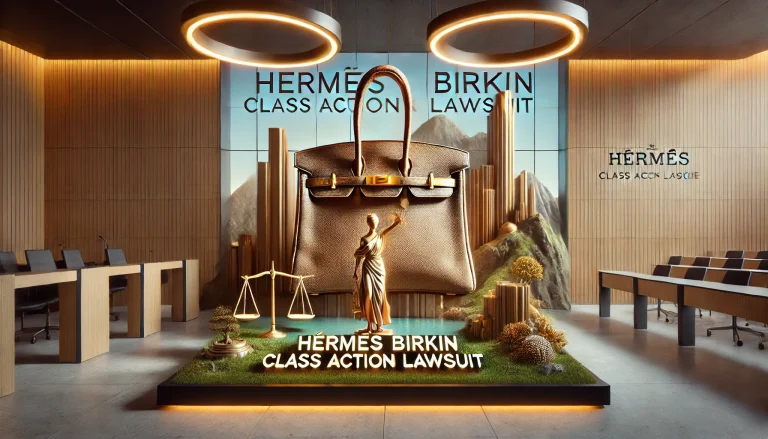The Hermes Birkin bag is synonymous with luxury, exclusivity, and status. It’s one of the most coveted fashion items in the world, often carrying a hefty price tag that can go up to several hundred thousand dollars. However, recent legal action against the brand has brought to light some controversial sales practices. In 2024, a Hermes Birkin Class Action Lawsuit was filed, accusing Hermes of violating antitrust laws by using unfair tactics to limit access to its Birkin bags. This article delves into the details of the lawsuit, the practices at the heart of the case, and the broader implications for both consumers and the luxury goods industry.
Background of the Hermès Birkin Bag
The Hermès Birkin bag is an iconic fashion item that has been a symbol of wealth and exclusivity since its creation in the 1980s. Named after actress Jane Birkin, the bag is known for its exceptional craftsmanship, premium materials, and high demand. Hermès is a brand that prides itself on maintaining its exclusivity, producing limited quantities of the Birkin each year to create a sense of rarity.
Despite its desirability, the process of purchasing a Birkin bag is not as straightforward as walking into a store and making a purchase. Historically, Hermès has limited the availability of bags and has used various practices to control who buys them. The brand’s sales tactics have now come under scrutiny, with a class action lawsuit accusing Hermès of engaging in unlawful behavior.
Hermes Birkin Class Action Lawsuit: What You Need to Know About the Legal Battle Over Sales Practices
The Hermès Birkin bag has long been a symbol of luxury, with its exclusivity and high price making it one of the most sought-after fashion items in the world. However, a class action lawsuit filed against Hermès in 2024 is questioning the brand’s sales practices and whether they are fair to consumers.
The lawsuit primarily focuses on the accusation that Hermès engages in “tying” practices, meaning the company requires customers to purchase other Hermès products before being allowed to buy a Birkin bag. The plaintiffs argue that this forces consumers to spend more money than they intended and limits access to the bags, which are already in limited supply.
In addition to the tying allegations, the plaintiffs have also accused Hermès of false advertising. They claim that the brand misleads consumers into thinking that the Birkin bag is readily available when, in fact, customers must meet certain purchasing criteria to obtain one. These practices, according to the lawsuit, violate antitrust laws by creating an unfair market for luxury goods.
Hermès, on the other hand, defends its practices, arguing that the exclusivity of the Birkin is what makes it desirable and that the requirement to purchase other products is not anticompetitive but a way to ensure customer loyalty. The company also claims that such tactics are common within the luxury goods industry and should not be seen as harmful to competition.
The lawsuit is still ongoing, with the court examining the claims to determine if Hermès has violated any laws. If the plaintiffs succeed, it could change how luxury brands operate, potentially leading to more transparent and fair sales practices in the luxury market. Regardless of the outcome, this case has already brought attention to the business practices that help define the luxury goods industry and could prompt future legal challenges.
The Lawsuit: Allegations and Claims
In March 2024, a class action lawsuit was filed against Hermès in the U.S. District Court for the Northern District of California. The lawsuit was filed by a group of consumers who claimed that the brand’s sales practices were unfair and violated antitrust laws. Specifically, the lawsuit argues that Hermès enforces a policy known as “tying,” which forces customers to buy other products from the brand before being given the opportunity to purchase a Birkin bag.
Tying is a practice in which a seller requires a customer to purchase one product in order to buy another. In this case, the plaintiffs allege that Hermès forces consumers to buy other goods—sometimes unrelated to the Birkin—before allowing them to purchase the highly sought-after bag. The plaintiffs argue that this practice is not only unfair but also illegal, as it creates barriers to access and harms competition in the marketplace.
In addition to the tying allegations, the plaintiffs have also amended their complaint to include claims of false advertising and fraud. They argue that Hermès misleads consumers about the availability of the Birkin bag, presenting it as an item that can be easily purchased when, in reality, consumers must meet specific requirements to buy it.
Hermes Defense: Denial of Allegations
Hermès has denied the allegations brought forth in the lawsuit, arguing that its practices are both legal and in line with the brand’s exclusivity. According to Hermès, the process of obtaining a Birkin bag is not designed to exclude customers but to maintain the quality and allure of the product. The company asserts that the tying practices are not anticompetitive but rather a way to ensure that customers who purchase the Birkin are loyal to the brand and committed to its values.
Hermès further argues that its sales practices are common within the luxury goods industry, where exclusivity and limited access are often key selling points. The brand contends that the high demand for the Birkin bag means that it cannot simply be sold to anyone who walks into the store. Instead, Hermès prioritizes customers who have a history of purchasing other items from the brand, ensuring that those who buy the Birkin have a demonstrated interest in the company’s products.
Legal Context: Tying and Antitrust Laws
At the heart of the case is the issue of tying, a practice that is often scrutinized under antitrust laws. Antitrust laws are designed to promote fair competition and prevent monopolistic behavior. In the context of this lawsuit, the plaintiffs argue that Hermès’ tying practices create an unfair market environment by restricting access to the Birkin bag.
Tying can limit consumer choice and prevent competition, as it forces consumers to buy additional products they may not want or need in order to obtain the desired item. The plaintiffs believe that Hermès’ actions harm both consumers and competition in the luxury goods market, and they are seeking legal remedies to address these issues.
However, proving that tying constitutes an antitrust violation can be complex. The court will have to consider whether Hermès’ actions are truly anticompetitive or whether they are part of a legitimate business strategy. It’s important to note that not all tying practices are automatically illegal; the court will need to evaluate the specifics of this case to determine if Hermès has violated the law.
Key Developments in the Case
Since the lawsuit was filed in 2024, there have been several key developments. Initially, the case focused on the allegations of tying, but in October 2024, the plaintiffs amended their complaint to include new claims of false advertising and fraud. They argue that Hermès misrepresents the availability of its products, misguiding consumers into believing they can buy a Birkin without fulfilling specific purchase requirements.
Despite these additional claims, Hermès continues to defend its practices. The company maintains that its policies are not designed to deceive or harm consumers, but rather to maintain the prestige and rarity of its products.
The court’s response to the case has been cautious. While the judge has expressed some skepticism about the antitrust claims, the plaintiffs have continued to pursue their case, with hopes of securing a ruling in their favor. The outcome of the case could have significant implications not only for Hermès but for the broader luxury goods industry.
Potential Implications for Consumers and the Luxury Goods Industry
If the plaintiffs are successful in their lawsuit, it could have major implications for both consumers and luxury brands. For consumers, a favorable ruling could pave the way for more transparent and fair sales practices in the luxury market. Consumers may no longer be forced to buy unrelated products in order to access coveted items like the Birkin bag, and they could have more straightforward paths to purchasing luxury goods.
For luxury brands, this case could prompt a reassessment of sales strategies. If the court rules that tying practices are unlawful, other brands might be forced to revise their own methods of selling exclusive products. Luxury brands could be required to find new ways to maintain their exclusivity without resorting to practices that limit consumer access.
In the broader luxury goods industry, the case could serve as a cautionary tale for brands that rely on exclusivity and limited availability. If the case leads to changes in the law, it could force luxury brands to reconsider how they balance exclusivity with fair competition and consumer rights.
What’s Next for the Case?
As of January 2025, the case is still ongoing, and the court has yet to issue a final ruling. The next steps in the lawsuit will likely involve further hearings, legal motions, and possible settlement discussions. The outcome could take several months or even years to reach, and it is unclear what the final decision will be.
For now, the lawsuit has already had a significant impact on public perception of Hermès and its business practices. Whether or not the plaintiffs win, the case has sparked important conversations about exclusivity, fairness, and competition in the luxury market.
Conclusion
The Hermes Birkin Class Action Lawsuit is a high-profile case that could shape the future of luxury goods sales practices. At the heart of the case is the question of whether luxury brands can continue using exclusivity-based strategies that limit consumer access to their products. If the court rules in favor of the plaintiffs, it could lead to changes in how brands like Hermès operate, potentially ensuring greater fairness and transparency in the industry.
As the case progresses, it will be important to watch how it unfolds and what impact it has on the luxury market. Regardless of the outcome, the Hermès Birkin lawsuit is likely to influence how luxury brands approach consumer access and exclusivity in the years to come.
FAQs
What is the main allegation in the Hermès Birkin lawsuit?
The lawsuit alleges that Hermès requires customers to buy other products before allowing them to purchase a Birkin bag, a practice called “tying.”
Why is Hermès being accused of false advertising?
Plaintiffs claim Hermès misleads customers about the availability of Birkin bags, creating a false impression of accessibility.
How does Hermès defend its sales practices?
Hermès argues its practices are standard for luxury brands, ensuring exclusivity and loyalty among customers.
What could happen if Hermès loses the lawsuit?
A ruling against Hermès could force changes in how luxury brands sell exclusive products, promoting fairer practices.
When will the lawsuit be resolved?
The case is ongoing, and while no exact timeline is clear, it could take months or years to reach a resolution.
Article Recommendations
Smoothstack Lawsuit: Examining the Allegations and Their Impact on Tech Employment Practices
Sparta Mesothelioma Legal Question: A Victim’s Guide to Asbestos Lawsuits and Support in Tennessee





